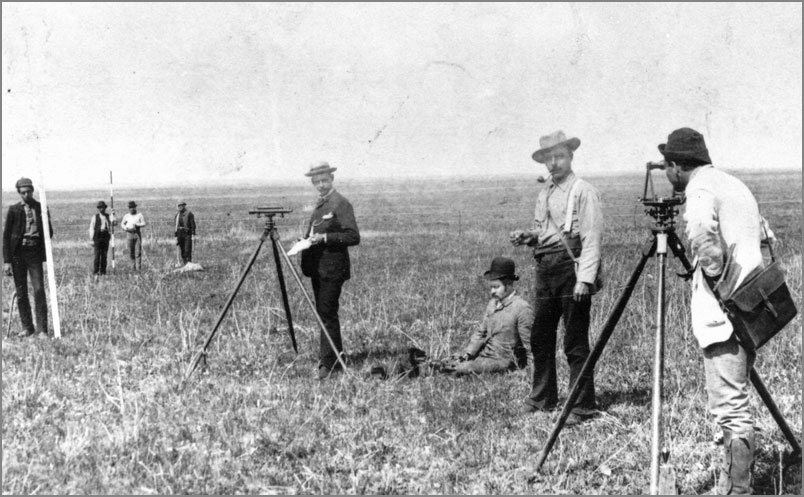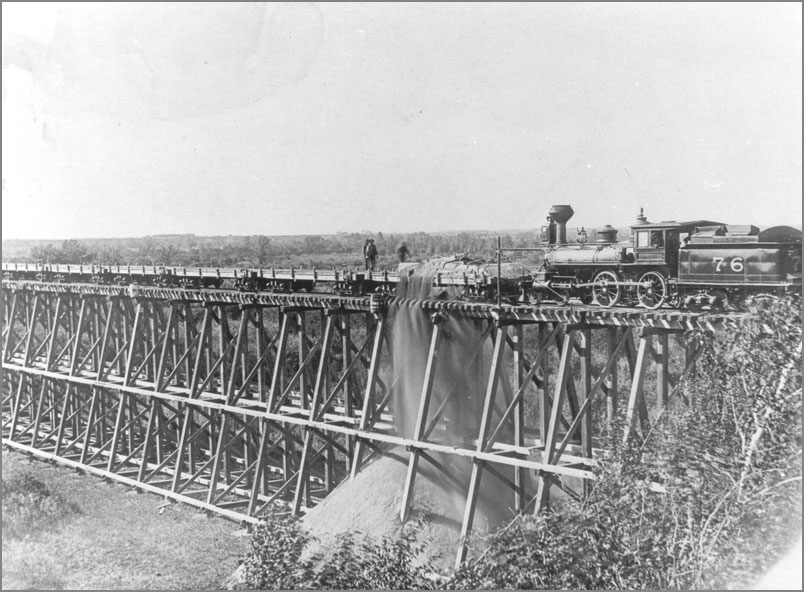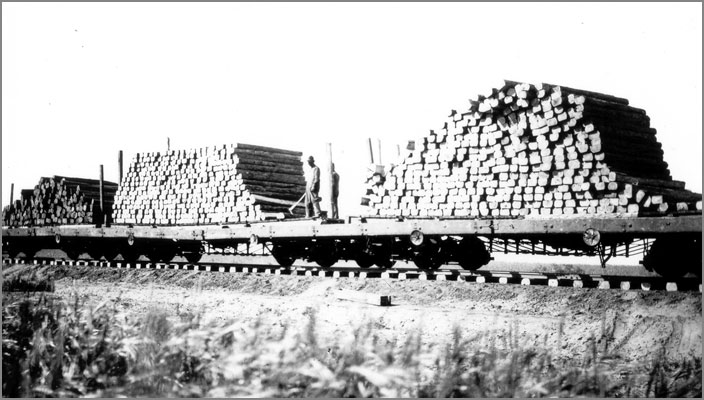Chapter
4: Laying the Rails

The task of
building a railway across the vast prairies was a mixed blessing.
True, the terrain
offered few obstacles, no mountains, only a few deep river valleys….
and long stretches of dry, flat, terrain. But the distances were truly
immense, and the materials all came from far to the east.
Wood was in short
supply on the prairies.
Today it might be
easy for us to forget the sheer effort required, the thousands of trees
to be felled, ties to be cut, rails to be forged; the huge amount of
material to be transported and assembled. The National Dream was in
addition to being an undertaking of incredible optimism and foresight,
an enterprise that relied heavily on brute force and manpower.
The first task
was surveying the line. Great care was taken to follow the “path of
least resistance”.

Surveyors
near
Brandon – Archives of Manitoba
The goal was to
go around hills rather than over them, and always to find the easiest
crossing of any valley or creek.

The CPR
Bridge at
Millford – Archives of Manitoba
Creeks and rivers
were crossed with wooden trestle bridges that were later filled in for
stability. One advantage of the CPR route through Westman was that it
avoided deep valleys like this crossing of the Souris River on a branch
line south of Brandon.

Ties – Archives
of Manitoba
A flat, level bed
was the first construction task, followed by the laying of the wooden
ties, and the attachment of the steel.
Unloading –
Archives of Manitoba
On a good day
three to five kilometres of track could be laid. Brandon pioneer
Beecham Trotter said ten kilometres was the record.
Placement –
Archives of Manitoba
Rails were
unloaded from flat cars and carried up the bank by hand, twelve men to
a rail, placed on hand cars, pushed to the end of steel and carried in
to place.
They were placed
4 feet, 8½ inched apart (standard gauge) and spiked into place.
The conditions
weren’t for everyone - turnover was high – especially as the nights
grew cold. Workers usually boarded and slept in rough two-storey
Pullman cars – with rows of bunks three deep on the upper level dining
on the main level.
In the summer of
1882, as the line pushed west from Brandon, 5000 men and 1700 teams of
horses were at work. Just three years and (1,568.2 km /973 miles) later
Van Horne, MacTavish & other officials were there at
Craigellachie, BC for the ceremonial last spike.
The construction
over the summer introduced thousands of lonely single men to the
fledgling city.
|
|


